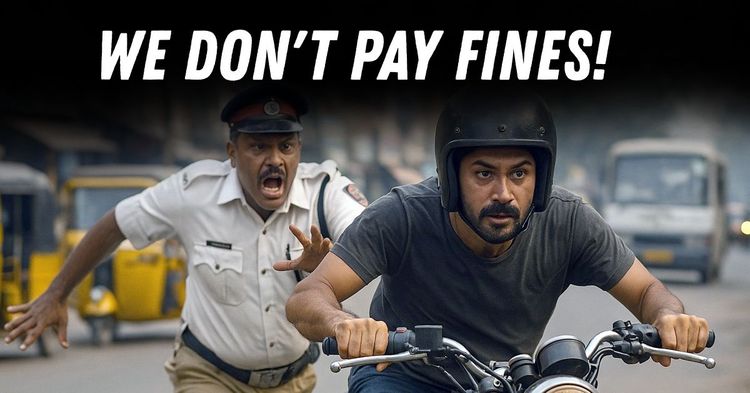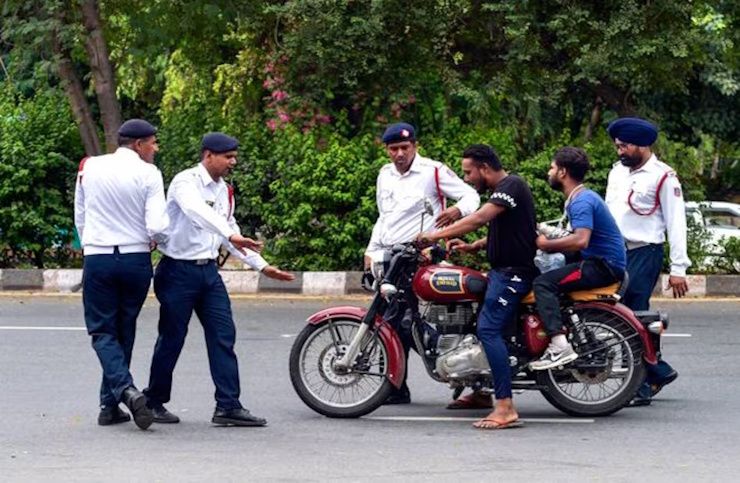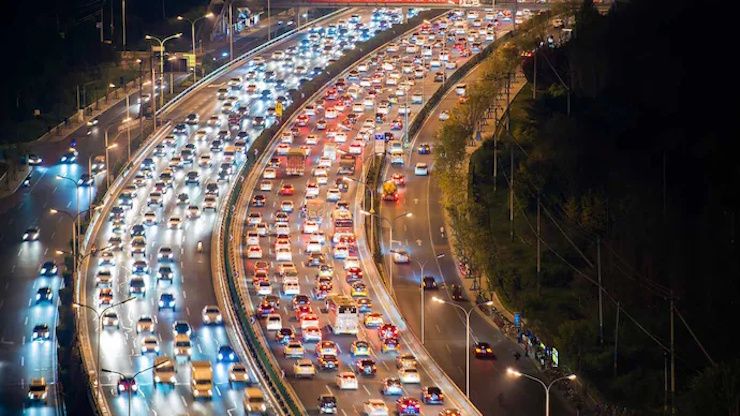Only 14 % E-Challan Fines Paid By Delhiites!


Delhi’s infamous traffic snarls are compounded by a troubling statistic: a mere 14% of the ₹4,468 crore in traffic fines issued through e-challans have been recovered. That means more than 86% of fines remain unpaid, pointing to deep-rooted challenges in enforcement, public compliance, and technological reliability. For two-wheeler riders who zip through Delhi’s streets daily, this isn’t just a governance issue—it’s a warning bell, especially with harsher penalties on the horizon.

Delhi has implemented one of the country’s most aggressive digital enforcement systems, issuing over 5.3 crore e-challans since 2019. Yet, its recovery rate is the worst among Indian states. The reasons for this apathy are multifaceted. Technical glitches are a major deterrent—payment platforms often crash, and notifications via SMS or email fail to reach offenders. Many riders only learn about their violations when they attempt to sell their vehicles or face court action.
Adding to the problem is the practice of waiting for Lok Adalats, where fines are often slashed by up to 80%. This has created a perverse incentive for offenders to delay payment, knowing they might eventually settle for a fraction of the original penalty. Moreover, a significant number of violators operate vehicles registered in neighboring states like Haryana, where cross-border enforcement is weak. With no immediate repercussions and a largely invisible enforcement system, riders feel emboldened to continue breaking rules.
In 2024, Delhi saw 74.5 lakh traffic violations recorded digitally, yet only 6% of those were resolved through payment—a stark reflection of this complacency.

Although traffic authorities do not segregate challan data by vehicle type, certain violations disproportionately affect the two-wheeler community. Helmetless riding continues to dominate the charts, with over 3.18 lakh such violations recorded in 2024—a 19% increase from the previous year. Speeding came next, with 2.45 lakh challans issued. Red-light jumping surged by an alarming 87%, and wrong-side driving wasn’t far behind, with nearly a lakh cases recorded.
The numbers also reveal repeat offenders who game the system. One commercial vehicle from Faridabad racked up 855 challans in a year—94% of them for speeding alone. This highlights how systemic loopholes and lack of deterrence allow rampant rule-breaking.
To curb this tide of non-compliance, the government is adopting a more punitive approach. Drivers who fail to clear their fines within 90 days risk having their licences suspended. In a bid to deter habitual offenders, a three-strike rule is also being introduced: three red-light jumps or dangerous driving violations in a year will result in a three-month licence suspension.
Insurers are also being brought into the loop. Vehicles with multiple pending challans will likely see their insurance premiums rise sharply, even with just two unpaid fines in a financial year. The aim is to make non-compliance expensive and inescapable.
To improve communication and increase compliance, authorities are developing a WhatsApp-based payment system that will send real-time alerts with direct payment links—an improvement over the outdated reliance on SMS alerts that often go unnoticed.
These steps are part of a broader enforcement modernization push, guided by Supreme Court directives. The rollout includes AI-powered traffic cameras, bodycams for officers, and FASTag-based tracking systems under the Motor Vehicles Act. Over 500 intersections are now equipped with smart surveillance that flags violations like helmetless riding or dangerous overtaking.
Delhi’s abysmal recovery rate contrasts sharply with states like Rajasthan and Maharashtra, where compliance rates range from 62% to 76%. These states rely more on physical checks and immediate enforcement, rather than delayed digital systems. Additionally, some southern states have launched social campaigns that link road safety with community responsibility, leading to a cultural shift in behavior.
Legal loopholes also play a role. While Delhi offers frequent Lok Adalat sessions with steep discounts, states like Haryana avoid such mechanisms, maintaining the integrity of the original fines. The result? Offenders in those states are less likely to wait out the system.
For Delhi’s two-wheeler riders, the writing is on the wall. Ignoring challans is no longer a sustainable gamble. The risks—licence suspensions, higher insurance premiums, and possible vehicle blacklisting—are mounting.
Riders should regularly check for pending challans on official portals like the Delhi Traffic Police or Parivahan websites, using either vehicle numbers or driving licence details. Avoiding repeat offences is now more crucial than ever; three violations related to speeding or red-light jumping could lead to a suspended licence. And with AI cameras now flagging violations at hundreds of locations, the likelihood of being caught has never been higher.
Delhi’s e-challan crisis reflects a broader disconnect between policy and ground-level execution. While digital tools promise scalability and speed, the absence of immediate consequences, cumbersome payment systems, and lenient settlement options have diluted their impact. However, the tide may be turning. With the government now tightening enforcement, and with insurance and legal systems aligned for better compliance, the city is gearing up for a stricter traffic regime.
For riders, this means adapting swiftly—understanding the rules, staying vigilant about violations, and demanding more reliable digital services. As Delhi inches toward its goal of zero traffic violations, the next phase of enforcement will determine whether carrots, sticks, or a mix of both lead the way forward.